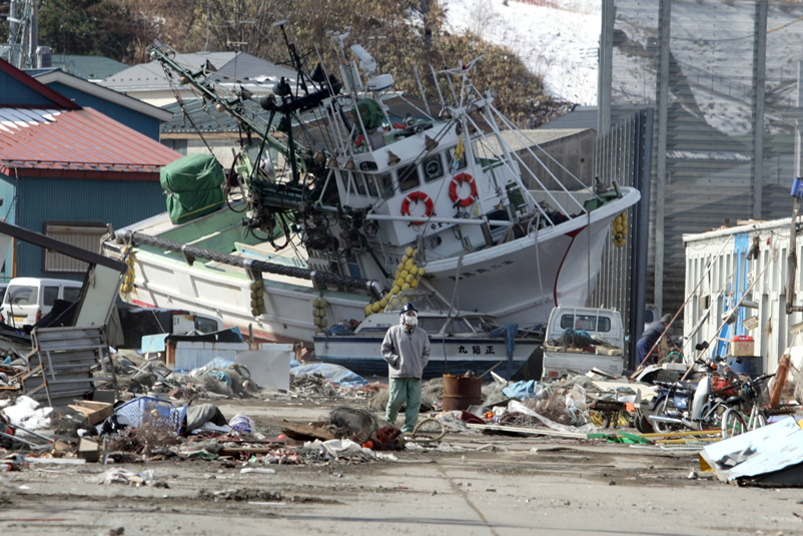University of Newcastle researchers captured media attention in 2017 with the release of a study modelling tsunami risk for the city of Sydney.1 The study considered a range of scenarios from minor disruptions through to rare, one-in-5000-year disasters.
It’s possible the study made headlines in part for the novelty factor. This is not to say Australians are flippant about tsunamis; as a nation, we have grieved the traumatic impact of tsunamis in our region. We just don’t think it will happen to us.
However, the science says otherwise. The historic and prehistoric record indicates that tsunamis have affected Australia in the past and could do so again. To Australia’s north and east lie thousands of kilometres of tectonic plate boundaries, where undersea earthquakes could generate tsunamis that reach Australia in a matter of hours. Given half the Australian population lives within 10 km of a coastline—not to mention the scores of interstate and international visitors to our beaches—it’s imperative we take tsunami planning seriously.

A massive tsunami left this fishing boat high and dry on the dock in Hachinohe Japan, following a 9-magnitude earthquake in 2011. Image: Kelly Barnes
That’s why the Australian Institute for Disaster Resilience partnered with the Australian Tsunami Advisory Group (ATAG) to revise and refresh national guidance for tsunami emergency planning in Australia. ATAG is the leading national group for tsunami capability development, bringing together the expertise of policymakers, scientists and emergency services practitioners from around Australia.
The review produced the Tsunami Emergency Planning in Australia Handbook, an authoritative resource for emergency managers, local and state governments, port authorities and commercial operators in coastal areas. Replacing its 2010 predecessor, Manual 46: Tsunami Emergency Planning in Australia, the handbook was published on 5 November 2018 to coincide with United Nations World Tsunami Awareness Day.
The handbook outlines the causes and characteristics of tsunamis, separating fact from fiction and highlighting key terms. It introduces planners to both ‘Marine Threat’ and ‘Land Inundation Threat’2 and explores the corresponding planning considerations for coastal communities as well as more transitory ‘maritime’ communities – including fishers, boaters and swimmers. Maritime communities also encompass a range of commercial and government activities, including offshore oil and gas enterprises, military exercises and tourism. The handbook steps users through the responsibilities, processes and warning types that comprise the Australian Tsunami Warning System that was established by the Australian Government after the 2004 Indian Ocean tsunami.
ATAG has actively contributed to the management of tsunami risk by promoting research, knowledge management and education. In 2018, ATAG also partnered with the Australian Institute for Disaster Resilience to develop the Tsunami hazard modelling guidelines that represent the most up-to-date view of tsunami hazard nationally. A key companion to the revised handbook, the guidelines present a principles-based approach to developing tsunami hazard information for different purposes; from emergency management to infrastructure development and insurance. The guidelines don’t dictate the use of a particular software; they ask questions to support cooperative approaches between scientists and end users.
Stakeholder consultation was key to the development of the Tsunami hazard modelling guidelines. Geoscience Australia, an ATAG member, led the process in partnership with public and private sector representatives and with Commonwealth funding support through Emergency Management Australia.
The guidelines emerged from a community-driven development process that engaged different end users and recognised the impact of a range of factors on modelling approaches and decisions (such as the use case and available data). A workshop held in Canberra in 2017 brought together tsunami modelling experts from government, industry and academia.
The handbook and companion guidelines are complimented by the Probabilistic Tsunami Hazard Assessment from Geoscience Australia. This resource informs local tsunami inundation modelling, which feeds into evacuation planning and community safety.3
The Tsunami handbook is also supported by Tsunami: The Ultimate Guide – an online learning resource developed collaboratively by ATAG and led by Surf Life Saving Australia. The guide raises tsunami awareness through the education of school-aged children and achieved a highly commended award in the 2014 Resilient Australia Awards.4
The Tsunami Emergency Planning in Australia Handbook and the suite of companion resources is part of the Australian Disaster Resilience Handbook Collection. The Handbook Collection represents nationally agreed principles on a range of salient disaster resilience themes; supporting organisations across Australia to adopt best-practice approaches aligned to national policy.
Footnotes
- Notzon N 2018, What would happen if a tsunami hit Sydney? Researchers plot possible impacts, ABC News. At: www.abc.net.au/news/2018-10-16/what-would-happen-if-a-tsunami-hit-sydney/10376680. Wilson K & Power H 2018, A tsunami could hit Sydney – and here’s what would happen if it did, SBS News. At: https://www.sbs.com.au/news/a-tsunamicould-hit-sydney-and-here-s-what-would-happen-if-it-did.
- Marine Threat and Land Inundation Threat represent distinct categories in Australia’s tsunami warning system. See Chapter 3: Tsunami Emergency Planning in Australia Handbook. At: https://knowledge.aidr.
org.au/resources/tsunami-planning-handbook/. More information on Australia’s Total Warning System is contained in the Public Information and Warnings Handbook. At: https://knowledge.aidr.org.au/resources/public-information-and-warnings-handbook/. - Geoscience Australia 2018, Probabilistic Tsunami Hazard Assessment. At: www.ga.gov.au/about/projects/safety/ptha.
- Anderson S 2015, Tsunami: The Ultimate Guide, Australian Journal of Emergency Management vol. 30, no. 1, pp. 41–42. At: https://knowledge.aidr.org.au/resources/ajem-jan-2015-tsunami-the-ultimate-guide.


